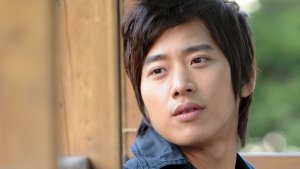 An Ultra Fan's Guide to Kim Ji Suk
An Ultra Fan's Guide to Kim Ji Suk
Korea
Turbulent Times Following the Korean War

History
*All links in BLUE are clickable links to relevant information. Whether they be articles or trailers or otherwise, feel free to check further.* *Also, all information was found in Wikipedia and or other relevant articles (all of which are clickable via the blue links.)*
INTRO:
1948: Establishment of Korea on August 17 under the newly elected president Syngman Rhee. The aftermath of WW2 divided Korea at the 38th Parallel (originally supposed to be "temporary" but the differing governments made it permanent. With the outbreak of the Korean War which was started by North Korea, Korea is now divided into Northern and Southern sectors. Between 1945 and 1948, political and economic chaos arose from a variety of causes that plagued the country, including the after-effects of the Japanese exploitation, the unprepared U.S. Military, refugees from the North, and those who returned from abroad.
Rule: South Korea had alternating periods of democratic and autocratic rule. The first rule under Syngman Rhee was democratic in its beginning and gradually became more autocratic. The second strongly democratic rule was overthrown in under one year and replaced by a military rule. The Sixth Republic (today's rule) has stabilized itself into a liberal democracy. The main policy of the First Republic was anti-communism and "unification by expanding northward."
1952-60: Syngman Rhee tried to make the presidency a directly elected position. He declared martial law and arrested opposing parties in 1952 and tried to push through an amendment to exempt himself from the 8-year term limit in 1956. He again arrested members of opposing parties and executed the leader of one party after accusing him of being a North Korean spy. He sought to tighten government control over all levels of administration in 1958. This caused outrage among the people, but despite this, he rigged the 15th March 1960 elections and won.
On that day, protests by students and citizens broke out in the city of Masan. (They were protests against electoral corruption as he was suspected of "eliminating" his competitors for the presidency.) As citizens faced off with the police, the city was blacked out and the police started shooting at people while people responded by throwing rocks. The protests were quelled by force but when Kim Ju Yeol's body was found on April 11th (after having disappeared during the riots on March 15th) floating in the harbor of Masan, the whole country was enraged and further protests spread nationwide. (Authorities said he died by drowning but the citizens found out that his skull had been split open by a tear gas grenade, which indicated murder. He became the basis for the April Revolution. It was later revealed that the chief of public sec. tied rocks to Kim Ju Yeol's dead body and threw him off the shore to prevent him from floating up.)
On April 19, students rallied and marched in protest (commonly called the 'April Revolution.') The government called martial law and the army suppressed the crowds with open fire (which was later revealed to have been intended to kill protesters rather than disperse the crowd.) Approximately 180 protestors were killed and thousands wounded. After an escalated protest with university professors on April 25, Rhee submitted his resignation on the 26th and fled into exile, but not before blaming Lee Ki Poong for most of the corruption. On April 27, Lee Ki Poong and his entire family were murdered by his eldest son who then committed suicide.
Germany: In the 1960's, West Germany invited nurses and miners from South Korea to come to Germany. One reason for this was to show support for a country that, like theirs, had been divided by ideology. The first group arrived on December 16, 1963, under a program paid for largely by the S.K. government. The Germans were responsible for wages and language learning.
Nurses began arriving in 1966. Poverty stricken South Korea sent a total of 7,968 men in their 20s and 30s in phases to coal mines in Ruhr Valley, where they would serve as miners for three years in exchange for South Korea receiving financial aid. The funds secured in this way provided a basic yet critical grounding for S.K., devastated by the Korean War, to be able to grow into one of the world's leading economic powerhouses. One enlistee said: "We were human collateral." - Working environments in German mines were notoriously rudimentary. 117 miners died in accidents. It was a "sink or swim" game. "Through their hard work and friendliness, they gained the deep respect and gratitude of the German people." The German government portrays their efforts as an important chapter of Germany's modern history.
Park Chung Hee became President of South Korea in 1963 after a military junta installed by the May 16 coup which ushered in the Third Republic. The KCIA was created in 1961, and almost immediately following its creation, the KCIA was used to suppress any domestic opposition to Park's regime using its broad powers to wiretap, arrest, and torture anyone without needing a court order. The KCIA was heavily involved in bribery, blackmailing, threats, and arrests. The KCIA was the most feared government agency until then. However, during his rule, dramatic economic growth occurred (commonly called the 'Miracle of the Han River'), which South Korea is famous for.
Vietnam War: On June 1, 1965, the prime minister of South Vietnam requested military aid from South Korea to support South Vietnam from communist North Vietnam. Most operations never exceeded battalion size. S.K. soldiers had better field intelligence and conducted counterinsurgency operations so well that American commanders felt that the S.K. TAOR was the safest. Americans' opinion was that it was good that the Koreans were "friendlies." A total of 320,000 South Koreans served in the war. About 4,000 - 5,099 were killed and 10,962 injured. The U.S. and Korea's involvement in the war ended on February 24, 1972.
In April that year, some Vietnamese claimed that relatives were killed by South Korean troops. "Our service in the war was to protect the security of Vietnam. To say otherwise is an affront to our honor," said one soldier who served from '67 - '69. Vietcongs feared the S.K. soldiers and ordered that contact with them was to be avoided at all cost unless victory was 100 % certain. South Koreans didn't always conduct themselves correctly, one incident led 46 civilians to be murdered in a rage after a booby trap killed four of their fellow soldiers. They were considered an integral allied force in the war. South Korea had the second largest contingent of foreign troops in South Vietnam after the U.S., and developed a reputation for their effectiveness.
The U.S. joined the war primarily because of the feared "domino theory" where it was believed that if one South East Asian country fell to communism, many would follow. On November 15, 1969, the largest anti-war demonstration in history took place in the U.S. This movement divided Americans bitterly as opposing beliefs about the war split them apart. The effects of the Vietnam War lasted long after the war ended, mainly because of the graphic violence displayed on American television. And many who served in the war suffered physical damage because of the effects of exposure to the toxic herbicide 'Agent Orange.'
The 4th Republic (1972 - 79): It began with the adoption of the 'Yushin Constitution' (similar to the Japanese 'Meiji Restoration') on November 21, 1972. It gave Park Chung Hee control over the parliament and the possibility of the permanent presidency. Students and activists for democracy held demonstrations and protests for the abolition of the Yushin system. Emergency decrees were dealt in 1974 and 75 that jailed hundreds of dissidents. The government removed opposition leaders and suppressed activists with violent means.
In 1979, mass anti-government demonstrations occurred nationwide (such as the arson attacks on thirty police stations on October 16) and in the midst of this turmoil, Park Chung Hee was assassinated on the 26th of October by the director of the KCIA, Kim Jae Kyu, who shot Park in the chest and head. Four bodyguards and a chauffeur were also killed. It is known as the "10.26 incident." No one knows for sure if it was a planned act or an impulsive one, as it was determined to be too careless to be thought out but yet too elaborate to be impulsive. Eventually, everyone involved in the assassination was arrested, tortured, and later executed. Choi Kyu Hah was placed in command and confirmed as the new president on December 6, but just six days later, on December 12, Chun Doo Hwan spearheaded a military coup and installed himself as the director of the KCIA in early 1980.
After Chun Doo Hwan's coup, in May of the following year, a vocal civil society made up of mostly university students and labor unions led a strong protest against authoritarian rule all over the country. Chun Doo Hwan declared martial law on May 17 and the protests escalated. On May 18, a confrontation broke out in the city of Gwangju between protesting students of Chonnam National University and the armed forces dispatched by martial law command. By 10am, the soldiers charged the students and the students responded by throwing stones. (Witnesses say soldiers clubbed both demonstrators and onlookers.) The incident turned into a citywide protest that lasted nine days until May 27 and resulted in the Gwangju Massacre. [The estimated death tolls ranged from a few dozen to 2,000.]
As the conflict escalated, demonstrating students were fired at, killed, and beaten in an unprecedented attack by government troops. An unknown number were killed near Gwangju station. Gwangju citizens took up arms by robbing local armories and police stations in a citizen militia against the violence that was taking place. They even burned down a local MBC station for misreporting the situation. On the night of May 20th, hundreds of taxis led a large parade of buses and large trucks and cars toward the provincial office to meet the protest. As the drivers drove into the demonstration, the troops used tear gas and pulled them out of the cars to beat them. These "drivers of democracy" showed up to support the citizens and the demonstration because of troop brutality they witnessed earlier, and also out of anger about taxi drivers being assaulted for helping injured citizens.
By May 22 - 25, the army blocked all routes and communication leading out of the city. Soldiers fired at a bus that attempted to escape the city, killing 17 of the 18 passengers. The uprising ended in defeat on May 27. (During Chun Doo Hwan's rule the authorities would refer to this as a rebellion instigated by communist sympathizers and rioters.) The Gwangju uprising has become a symbol of South Korea's struggle against authoritarian regimes and their fight for democracy.
In 1985, families from both sides of the border of North and South Korea made cross visits to Seoul and Pyongyang in a historic event where separated families reunited.
The June Struggle (June Democracy Movement/Uprising) (June 10 - 29 1987): This was a nationwide democracy movement in South Korea that generated mass protests which led to the 6th Republic. When Chun Doo Hwan announced Roh Tae Woo as the next president it triggered massive protests. In the 1980's many student activists in universities struggled against Chun's dictatorship and the aftermath of the Gwangju Massacre. Park Jong Chul was one of those students. He was detained during an investigation and refused to confess the whereabouts of one of his fellow activists. During the investigation, the authorities used waterboarding techniques to torture him, eventually leading to his death on January 14. The reason for his death was suppressed, but the CPAJ revealed the truth to the public on May 18, inflaming public sentiment. The CPAJ planned a June 10th demonstration in his honor.
Students of Yonsei University demonstrated on June 9th at the university. During this protest, Yonsei student Lee Han Yeol was seriously injured when a tear gas grenade penetrated his skull. He quickly became a symbol of the protests over the weeks. He died on July 5th from the injury. On June 18, the white collar workers, who had before remained on the sidelines, joined the protests by throwing rolls of toilet paper, applauding and voicing their support. On June 19, Chun issued orders to mobilize the army, but fearing a reprise of the violent Gwangju Massacre he turned back his orders. Eventually, Roh Tae Woo issued the June 29th declaration and promised to amend the constitution. The new constitution took effect on February 25, 1988 when he was inaugurated as president. The Summer Olympics took place shortly after.
Roh and Chun were both sentenced to prison in December 1996 under Kim Young Sam's rule. A variety of disasters happened during this time, a train collision and a ship sinking in 1993, Seongsu Bridge and Sampoong Department Store collapses in '94 and '95, and in 1997, the country fell into a financial crisis.
IMF Financial Crisis 1997 - 99: IMF is what this financial crisis is commonly known as. It was brought about by excess debt due to loans. There were major failures and takeovers during this period. South Korea managed to get out of this crisis over the next few years mainly due to measures in labor adjustments and alternative funding sources. The economy in S.K. is now the 4th largest in Asia and the 11th in the world. dominated by family-owned conglomerates called chaebols. They came into being because of Park Chung Hee's 5-year economic plan and played a key role in developing new industries and markets, helping place South Korea as one of the Four Asia n Tigers (which are wealthy, industrialized countries that underwent rapid industrialization from the 1950's - early 1990's.)
Economy: South Korea has grown in development of education, economy, and culture. Since the 1960's it has developed from one of Asia's poorest to one of the wealthiest nations. In 2009, South Korea officially became the first major recipient of ODA to have ascended to the status of a major donor of ODA. It has the largest indoor amusement park 'Lotte World.' It remained one of the poorest countries in the world for over a decade following the Korean War, now it is the 20th most visited country in the world. And until the late 1990's a "me first" syndrome characterized most of the Korean society. Pushing and shoving and resorting to corruption was frequent to get ahead. This is where the term "Seoul divided by the Han River" comes from. As the South side grew and expanded and developments were made and many people moved there, the North side was left out. By the end of the 1990's, however, Koreans started to show a sensitivity and concern for others.
DMZ & JSA: There have been many, many skirmishes in this area over the years. The DMZ is a strip of land running across the Korean Peninsula. It's a border that divides it roughly in half. Within it is the Joint Security Area (JSA) where the North and South Korean forces stand face to face to prevent the possibility of another war. It is often called a "truce village." It's one of the most heavily militarized borders in the world. There have been over 750 acts of violence and other provocations since 1953, and fatalities include over 500 South Korean soldiers, 50 U.S. soldiers and 250 North Korean soldiers (between '53 and '99). Some incidents involved attacking a UNC truck and killing the soldiers on board, straying in airspace and forced to land, random gun attacks, a Korean airline hijacking, a shoving match that grew violent with rocks and shovels. A journalist was attacked - known as the 'major Henderson incident.' One of the most famous ones is the 'Axe murder incident' where a UNC work party were pruning trees that were blinding visibility, and were attacked suddenly by North Korean guards, killed with the axes they were using which were then dropped to flee. There was a defector incident where a Soviet citizen suddenly ran across the Military Demarcation Line into South Korea and a 40-minute gunfight ensued. There were a Chinese officer and his wife who defected to South Korea as they crossed the Military Demarcation Line into South Korea. The "Bridge of No Return" was mentioned in the movie 'JSA.' It's a bridge that crosses the Military Demarcation Line in the DMZ and was used for prisoner exchanges in the past. (Read up on it if you'd like to learn more about this.)
There are also "peace villages" on either side of the DMZ. People living in these areas are exempt from paying taxes and other civic requirements such as the mandatory military service. While people really do live in the Southern village, it seems as if the Northern village is just a farce, a pretend village with no inhabitants. When South Korea put up a flagpole in their village, North Korea built an even taller one in theirs. This is referred to as the 'flagpole war.' They also have loudspeakers that play propaganda and have been going off and on for years on both sides. It's illegal to take pictures of the DMZ fence (most photos you see online are of the CCL fence.) Several endangered animals now exist in the DMZ between the heavily fortified fences.
Interesting fact: The ruins of the capital of Taebong (founded by Gung Ye) that later became Goryeo, and Gung Ye's tomb lie within the DMZ and are off limits to everyone but the soldiers who patrol the DMZ.
Reunification: Refers to the potential future reunification of North and South Korea under a single government. The process started in June 2000 but hasn't really gone anywhere since then because of all the incidents that keep happening between the two countries, and other issues. It's generally viewed as inevitable by the U.S. and South Korea. Reunification remains a long-term goal but support for it is waning among the younger generation. Many think that it's because the younger generation doesn't share the previous generations' perception of their unnatural division and are more concerned with the economy and what a reunification would mean for it. Some scholars even suggested that the plans should be abandoned if necessary.
Dramas
Count of Myeongdong (2004)
This drama documents the lives of people who lived in the area of Myeongdong before and after the Korean war, the changes brought by the war to the people, the tragedies they had to face, and sensitive topics that were coming up. It features poets, dancers, novelists, entertainers and the like. During 1953 until the 1960's the drama delves into the lives of the people and the history of this area and the era.
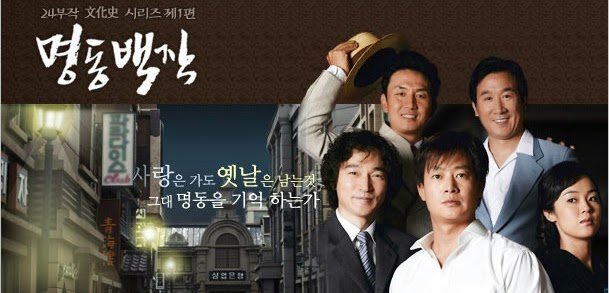
Lights and Shadows (2011)
Teaser - It's about a man's ups and downs starting in the 1960's when his father was falsely accused of being a communist. It goes to about 1989. Having his father taken from him when he refused to be mature, and his best friend turning on him, leads the main character to grow up. He takes to the stage and puts together a show business where he raises singers and actresses. Constantly being pursued by an enemy, he must use his wits to avoid them trying to capture him. He falls in love with an aspiring actress on the way. This drama also travels through periods in time like the Vietnam war, the May 16th military coup, and the assassination of Park Chung Hee.
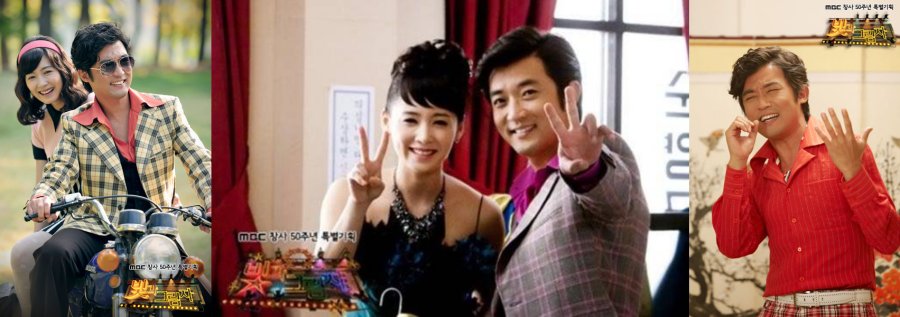
Korean Peninsula (2012)
Teaser - It's a love story between South Korean and North Korean scientists who worked together on the joint Peninsula before the North tries to steal an important invention and pulls the lovers apart. The man goes on a journey to save his love who is getting tortured in the North. He is also rallied to become the next president of South Korea. As their love drives them to find each other again, they are pulled apart by her best friend and other people involved in trying to keep them separated. He's a man who doesn't know the phrase "give up" - he's relentless in his pursuit and stops at nothing to save his love and his country. (If you liked the romance that was portrayed in King2Hearts, then you'll probably like the similar love story in this one.) 
Eunhui (2013)
Intro teaser - I have this drama on hold at the moment (not because it's not good, it's just because at the time I had too many distractions lol - I plan to go back to it soon as I really liked what I had seen so far and want to finish it.) It starts off a day before the Korean war breaks out, and one man is unintentionally murdered but the murder is placed on the lead girl's father and she is shunned because of it. She falls in love with the murdered man's son. This drama is about their story. (It's also set during those tumultuous times after the war.)
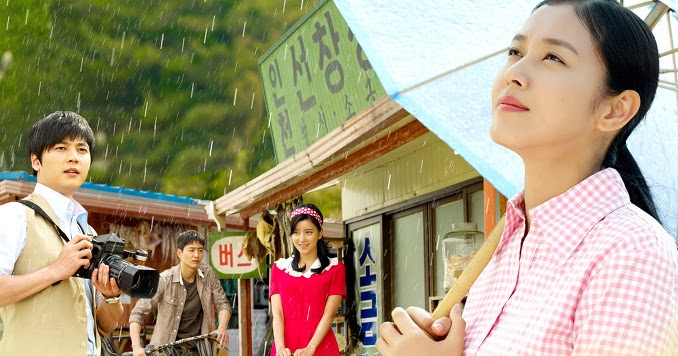
Endless Love (2014)
MV1, MV2 - Set in the 1970's up to the 1990's, it's about the politics and financial situations that took place during that time period. In this drama, a girl is caught in the middle of two brothers. One whom she loves (who's a total jerk) and the one who loves her (who I think this drama is named after.) In this drama several terrible things happen to the lead girl, constantly going in and out of interrogations, imprisonment, abuse, rape, attempted murder - just about everything is thrown at her.
Despite this drama going round in circles with her constantly being picked at and her never stopping, I enjoyed most of it until the ending left me utterly disappointed. If you watch this, I'd watch it just for the era and Kwang Chul (Jung Kyung Ho) as they are the main and best reasons to watch - despite the terrible ending. Just go in knowing that you will be disappointed in the end or skip the end altogether.

East of Eden (2008)
MV - Not directly related to any events, but I included it because it's set sometime during the 1980's or before, and they show the harsh treatment and abuse you'd get if you got interrogated by the police back then. The governmental corruption. The casinos that came to be during that time and the student protests that happened in that era. Also how you could be accused of something you didn't do just because someone wanted you to be. The gangs that erupted and the rich people who could not care less about what happened to the average struggling person. Also, it shows the harsh realities of miners in the beginning. It's just one of those dramas I have a deep attachment to and want everyone to see.

Into the Flames (2014)
It's about the formation of a steel factory called Posco, which helped shape the economy of Korea during this era into being one of the leading industries. This drama depicts the founder's life story from the end of the Japanese era to his founding of the company and how he builds his team and finds love. Along with fictionalized events, of course.
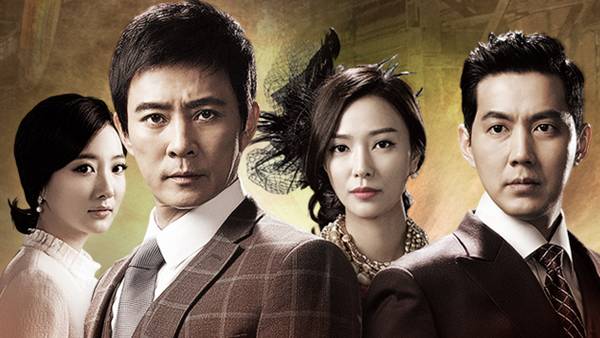
More dramas set in the late 1950's up to present day:
- Love & Ambition (2006) - set in the post-war era of the 1950's to present time
- Sea of the Woman (2017) - set in the 1960's - '70's
- Wind Flower (2005) - about an orphan girl who struggles to find love in the 1950's post-war Korea
- Giant (2010) - tells the story of three siblings who grew up in the 1970's after being separated at a young age
- Beautiful Days (2007) - about four siblings living in the 1970's
- Sam Saeng (2013) - set in the 1970's
- The Reason I Live (1997) - set in the 1970's
- Gold Land (2014) - a woman succeeds in ginseng business from the 1950's - '70's
- My Minds Flower Rain (2016) - about a girl who lost her family during the Korean war and grew up experiencing the rapid change of the 1970's
- That Sun in the Sky (2016) - set in the 1970's, a girl rises to stardom (I'm going to watch it just for Noh Young Hak ;))
- The Firstborn (2013) - it's about a family that loses their parents in the early 1960's and how the firstborn takes care of his siblings
- Sandglass (1995) - about a friendship that is put to the test during one of Korea's tumultuous periods of the 1970's - '80's
- 5th Republic - a drama about the takeover of the Korean government in 1979 by Chun Doo Hwan.
*There may be more dramas I'm missing*
Movies
May 18 (2007)
Trailer 1, Trailer 2 - Based on the 1980's Gwangju Uprising, the film centers around the horrific event that took place, where students were protesting the current law, and soldiers were throwing tear gas at the crowds and violent beatings were delved out onto the citizens leading to many deaths. In this film, because of this deadly fight the citizens gather together and form a militia where they fight back to protect the ones they love.
This movie will make your heart ache and tears will drop from your eyes like a torrent rainfall. I personally love this movie, any movie that can evoke strong emotions out of me, or any movie that is based on a true story tends to touch me that much deeper and I feel like I'm connected to the people who had to endure such an event.
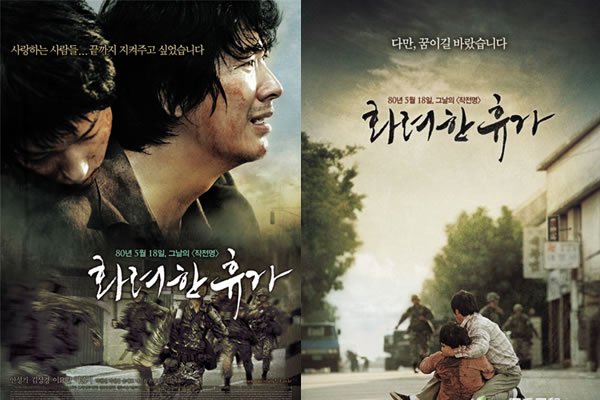
Hanbando (2006)
Trailer - It starts with the possibility of the two Koreas reunifying via a railroad, but then Japan claims ownership via the old "contract" made by King Gojong during the occupation period. A historian goes out of his way to prove that the contract was fake to begin with, and that Japan had no legal rights. The film delves into the fact that Gojong was coerced into the contract and he didn't use his own seal, and it also talks about how Queen Min was assassinated.

Sunny (2008)
Trailer - It's about a woman who travels to Vietnam to find her husband. She becomes a traveling singer and performs at clubs and war units. The problem with this drama is that the synopsis leads you to believe it will be a romantic movie about deep love (like that of Anne Shirley who traveled to Germany to find her husband who went missing after enlisting), but unfortunately, this movie isn't like that. It's not about a deep profound love and the longing of a married couple. In fact, this movie doesn't even tell you what her purpose was in going there to find him in the first place.
The only thing I actually enjoyed about this film (besides its setting, Vietnam (the reason I watched it)) is the bad formation, the band bonding, and Jung Kyung Ho's character. This movie leaves a lot to be desired. And then it just ends and you're left like, 'What did I just watch?' (at least that was my feeling after finishing it.) It gave me a bunch of things without a purpose while the purpose was what I was looking for. I did, however, enjoy the music.

Joint Security Area (2000)
Trailer - In the center of the DMZ lies the JSA where both of the Koreas line up on one side, divided by a cement slab in the center. Heavily guarded, their job is to protect their side from the other's possible invasion or threats. Many incidents have happened in this area over the years. This movie is about one such "imaginary" occurrence and how each side reacts to it, and about a woman who has to uncover the truth about it. I enjoyed this movie, the bromance that formed and the events that happened to the characters as a result.

Northern Limit Line (2015)
Trailer - This movie is based on the true story of the Battle of Yeonpyeong that took place in 2002. The Northern Limit Line is the boundary between North and South Korea where border patrol ships were stationed and the soldiers' duty was to protect it from invasion from the other side. North Korea likes to dispute this and claims that the line is further South and at times they try to enforce their claim by crossing the limit line and ensuing battle.
In this movie, such a ship crosses the line and is warned to turn back, but instead, another ship joins it and they threaten the Southern ships. After going so far past the limit line, the North Korean vessels attack the South Korean vessels that have been observing them, and this started the battle in which they both fired against each other. This led to many casualties and deaths. This film shows the battle along with the soldiers' own stories and the friendships that were formed prior to the attack. It will no doubt leave you in tears.

Once Upon a Time in Seoul (2008)
Trailer - This movie is centered around two orphaned boys who, right after the war ended in 1953, live in a camp for orphans and have to fight to survive. Suffering from hunger, overwork, and harsh treatment, these two best friends try to find a way to survive and plan to steal from the US supply base to start a business, but because their business takes away from the local gangsters, they end up in a turf war. It's just a look at what it was like after the war for some people. I enjoyed the bromance even if it was strained. 
Ode to My Father (2014)
Trailer - This movie starts out during the Korean War and shows the promise the main lead made with his father during the Hungnam evacuation. It then goes to a time after the war where he's all grown up. He needs to make money for his family, so he signs up for the recruitment of miners going to West Germany, and later goes to the Vietnam war with his best friend. This movie also shows the fact that famous singer Nam Jin participated in the war. (I had to look up to see if that was true and it was.) It then shows the time where tv stations put up programs to search for missing family members who were separated during the Korean War.

1987 (2017)
*Coming soon* This movie is supposed to be about people trying to reveal the truth about the murder of Park Jong Cheol, who became the fuze of democratization in 1987. He was tortured and killed in January 1987, which lead to the June Democracy Movement.

26 Years (2012)
Trailer - A fictionalized movie about the survivors of the Gwangju Massacre and their thirst for revenge on the person who initiated it. They get together and find a way to eliminate him once and for all. Unfortunately, this movie left me hanging and I didn't like it. If it's fictionalized anyway, they should have gone all the way with it. Needless to say, I was left disappointed in the end.

A Taxi Driver (2017)
*In theaters now* Trailer - A taxi driver finds himself in the midst of the Gwangju Uprising. This movie shows a fictionalized story based on a true event where a taxi driver gives a ride to German reporter Jürgen Hinzpeter and made it possible for word to get out about the atrocities that took place there. The taxi driver that drove him still has not been found. (I really wish theaters where I live would show these movies, but unfortunately, I have to wait for them to be officially released before I'll get to see these gems.)

Silmido (2003)
Trailer - The film is based on the true story of Unit 684 made up of criminals and death row inmates to go to the island of Silmido and train harshly in order to fulfill their mission to assassinate Kim Il Sung under orders of the Korean Republic Army. They underwent harsh mental and physical abuse for two years on the island. In the end, their mission was canceled and for unclear reasons, they revolted and hijacked a bus to Seoul, where they stopped in front of an army station and committed suicide by hand grenades.
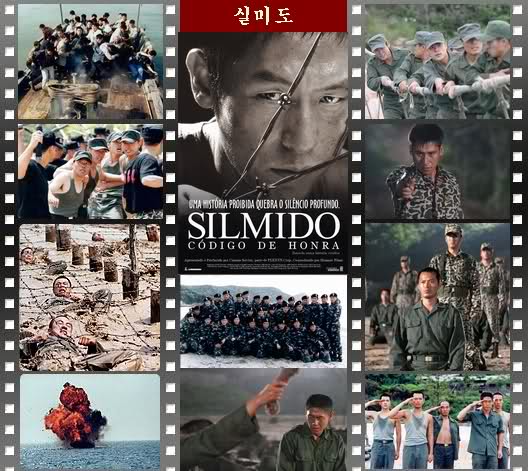
More movies:
- Late Spring (2014) [Trailer] - about a genius sculptor who is diagnosed with a disease that will eventually paralyze his body. He gets introduced to a nude model in the 1960's when people were being sent off to Vietnam.
- White Badge (1992) - tells the story of one group who was sent to Vietnam through the eyes of an author who meets his fellow comrade suffering from delusions of still being in the war.
- Grandfather (2016) [Trailer] - about a soldier from the Vietnam war who tries to save his granddaughter
- My Sisters March (2010) - tells the story of the students and citizens who participated in the 1960's march
- Masan Protest - against electoral corruption
- Gangnam 1970 (2015) - It's about gang members who fight over rights to various plots of land during the height of political corruption, while two best friends are separated.
- Ce'st Si Bon (2015) [Trailer] - is about a duo (previously a trio) of friends who named Twin Folio
- Tarzan Park Heung Sook (2005) [Trailer]
~ Documentaries ~
May 18 Documentaries: 'Their Gwangju, Our Gwangju' is a documentary listing all the martyrs that died trying to tell the truth about what happened on May 18, 1980. 'Remembering the History of May 18th movement' gives you glimpse into what took place and how they are now remembered. 'The US involvement in the uprising' shows findings of old records and documents.
May 18th Revolution song: 'A March for the Beloved' with lyrics by Baek Ki-wan and Hwang Sok Yong, and music by Kim Jong Ryul. This song instantly became the anthem to the South Korean Democratization Movement. Later in 2012, Ahn Chi Hwan recorded the song. Ahn Chi Hwan also put music to a poem written by Kim Nam Joo called 'Freedom.' Kim Nam Joo spent most of his life as a political prisoner under the rule of Park Chung Hee and Chun Doo Hwan.
Speed released a song where the MV features the Gwangju Massacre, starring Ji Chang Wook, Ha Suk Jin and Park Bo Young called 'It's Over' (drama version - 14 minutes, song version - 7 minutes). Their 'That's My Fault' MV has the same theme and actors in it with a bit more to the story. This pairing really makes you want to see them as a couple in a drama.
- A song written when seeing miners and nurses being sent to West Germany, originally by Moon Juran, Park Kiyoung recently covered it in an episode of Immortal Songs: 'Farewell in the Airport' - And a song by Yumi covered in an episode of Immortal Songs: 'Lost 30 Years' which talks about the pain of being separated from your loved ones that you really want to see again. The original song: '잃어버린 30년' by Sul Woondu.
- A documentary on the 'June Struggle' of 1987 that was influenced and fueled by the 1980 uprising.
- Footage from the 'April Revolution' where people protested against unfair electoral corruption.
- "The Miracle of the Han River" brought about by Park Chung Hee: (Doc. 1) (Doc. 2) [Korean Culture Series: Korea's Economic Miracle] - all the 'Culture Series' are really great to watch.
- Koreans in the Vietnam War (3-minute video) and the Vietnam War Documentary.
This will end my 3-part series on the History of Korea from the Colonial times to present day. Hope you enjoyed it!
Related:


